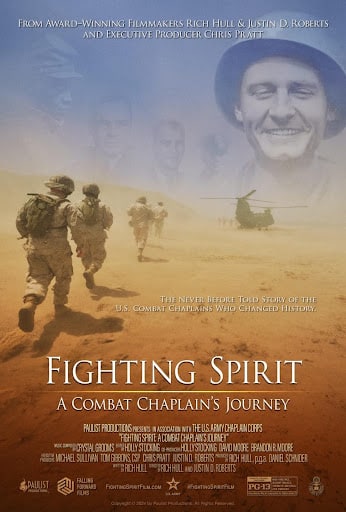The stories of brave American soldiers have graced our screens many times, but have you ever wondered about the chaplains who serve them? Why would someone decide to become a military chaplain? How are they trained? How do they serve their fellow soldiers? How do chaplains accompany their men the night before they go into combat? How do they help their comrades mourn the fallen? What happens to chaplains when they return home?
Fighting Spirit: A Combat Chaplain’s Journey comes to select theaters on November 8, in time for Veterans Day. In 73 short minutes, this latest film from Paulist Productions portrays the riveting inner battle of Justin Roberts, a former chaplain with the U.S. Army’s 101st Airborne as he tries to “make sense of his experiences” upon returning home from active duty in Afghanistan. While there, rather than carrying weapons, he carried a camera. In Fighting Spirit, Roberts reminisces through his photos, movies, and memories. His journey to Kansas to participate in the funeral of Korean War Chaplain Father Emil Kapaun takes pride of place. Interspersed are the stories of heroic chaplains who served America’s solders on the battlefield—sometimes risking their own lives. Roberts and other chaplains currently serving reflect on these heroic chaplains while explaining the essence of military chaplaincy.
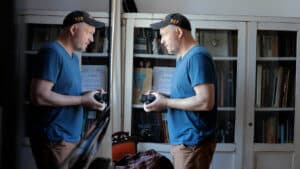
Fighting Spirit introduces us to the chaplains whose heroic, self-sacrificing service in battle makes them models offered to modern chaplains during their training.
- Going back to the Civil War, former fugitive slave turned chaplain Garland White recruited African-Americans, and served them as they fought for their freedom.
- The Four Chaplains, a Catholic priest, two protestant ministers, and a Jewish rabbi are memorialized in a chapel in Philadelphia. Together on the USAT Dorchester, torpedoed in the freezing North Atlantic waters during World War II, all four drowned after giving their life jackets away and leading numerous soldiers to lifeboats. Veterans who vividly remember their service, tell about watching them sink. Active chaplains share how touched they are by the witness of these other-focused life-savers.
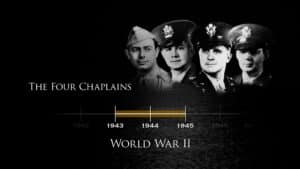
- Jesuit Naval Chaplain Father Joseph O’Callahan served in both the European and Pacific theaters of World War II. Survivors recall seeing Father O’Callahan all over the USS Franklin, after it was bombed—leading rescuers, throwing ammunition overboard, helping the wounded, and more. Awarded for his heroism upon returning home, over time he began experiencing the PTSD that many veterans experience. He would never be the same person he was before combat.
- US Army Chaplain Father Angelo Liteky earned a Medal of Honor in Vietnam. His story demonstrates another role chaplains play as a moral compass. Chaplain Liteky denounced a “Bounty Program” granting R&R passes to soldiers for a certain number of enemies killed. Years later, he left his Medal of Honor at the Vietnam War Memorial protesting US policy in Central America.
- S. Army Chief of Chaplains Tom Solhjem was a chaplain in Desert Shield/Desert Storm. He recounts an episode when his battalion encountered armed men with hard-shelled vehicles and automatic weapons. His story demonstrates the situation many chaplains find themselves in when they have to make split-second decisions that literally mean life or death for soldiers—on both sides.
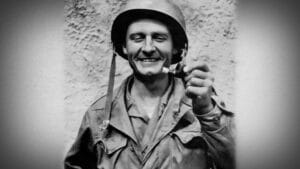
- Korean War Army Chaplain Father Emil Kapaun became a POW. Survivors recount how he cared for fellow prisoners, even when he was in tremendous pain due to illness. Chinese soldiers then moved him to a bunker and left him to die. He was declared a Servant of God in 1993. His body was discovered in March 2021, and returned to his hometown of Wichita, Kansas where he was buried in September of the same year.
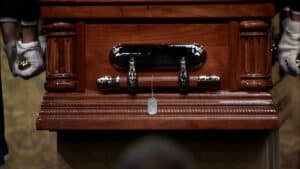
- Retired U.S. Army Major Jeff Struecker’s story is unique. He himself recounts what happened in Somalia in 1993, chronicled in the movie, Black Hawk Down, and what led him to become a chaplain himself.
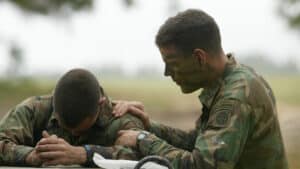
The best part of the movie for Diocese of Albany priest and licensed clinical social worker Father Thomas Konopka was seeing Faher Kapaun “celebrating Eucharist on the top front of a jeep.” To see how Christ is “present in the midst even of conflict,” to see chaplains “minister to the dying,” who “maybe was the one voice the person heard as they were going home,” made the movie “very impressive” for him. “It’s a great example of what faith can do even in the midst of conflict—the undying spirit of someone who is really convinced of what they believe in.”
In terms of vocation, “it’s a great opportunity for our young people to see what ministry is about, whether it’s ordained or lay,” Father Konopka continues. Fighting Spirit has even got him thinking about looking into “working as a chaplain in the V.A. for post-war opportunities to work with these men and women, to be able to walk with them in the aftermath of war which is often where they need the most help.”
For information on theaters and showtimes, go to the film’s website here.

